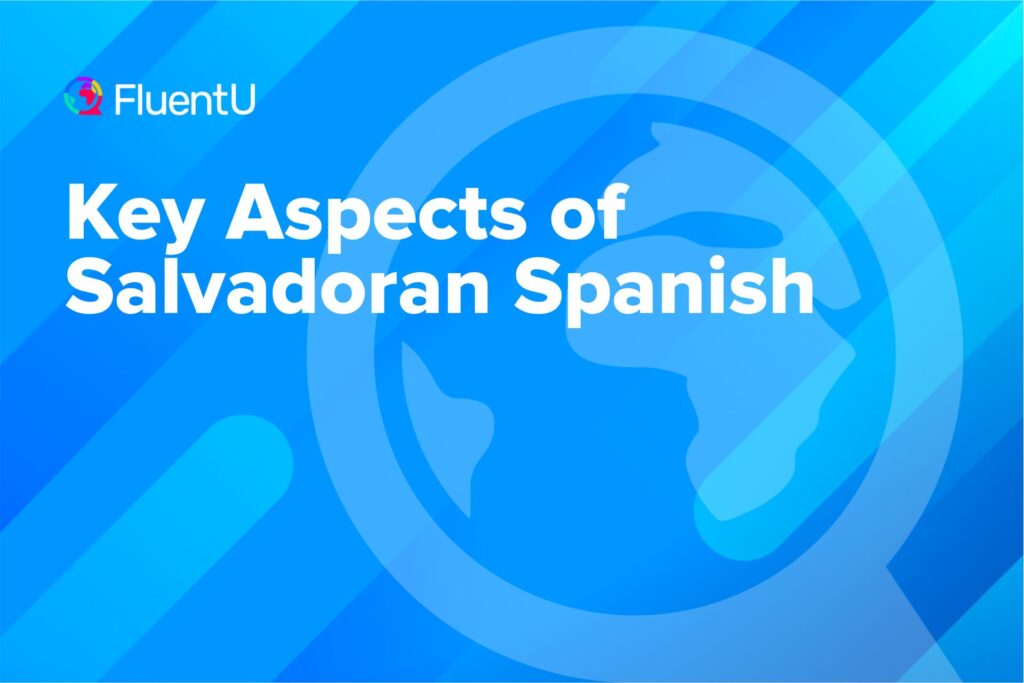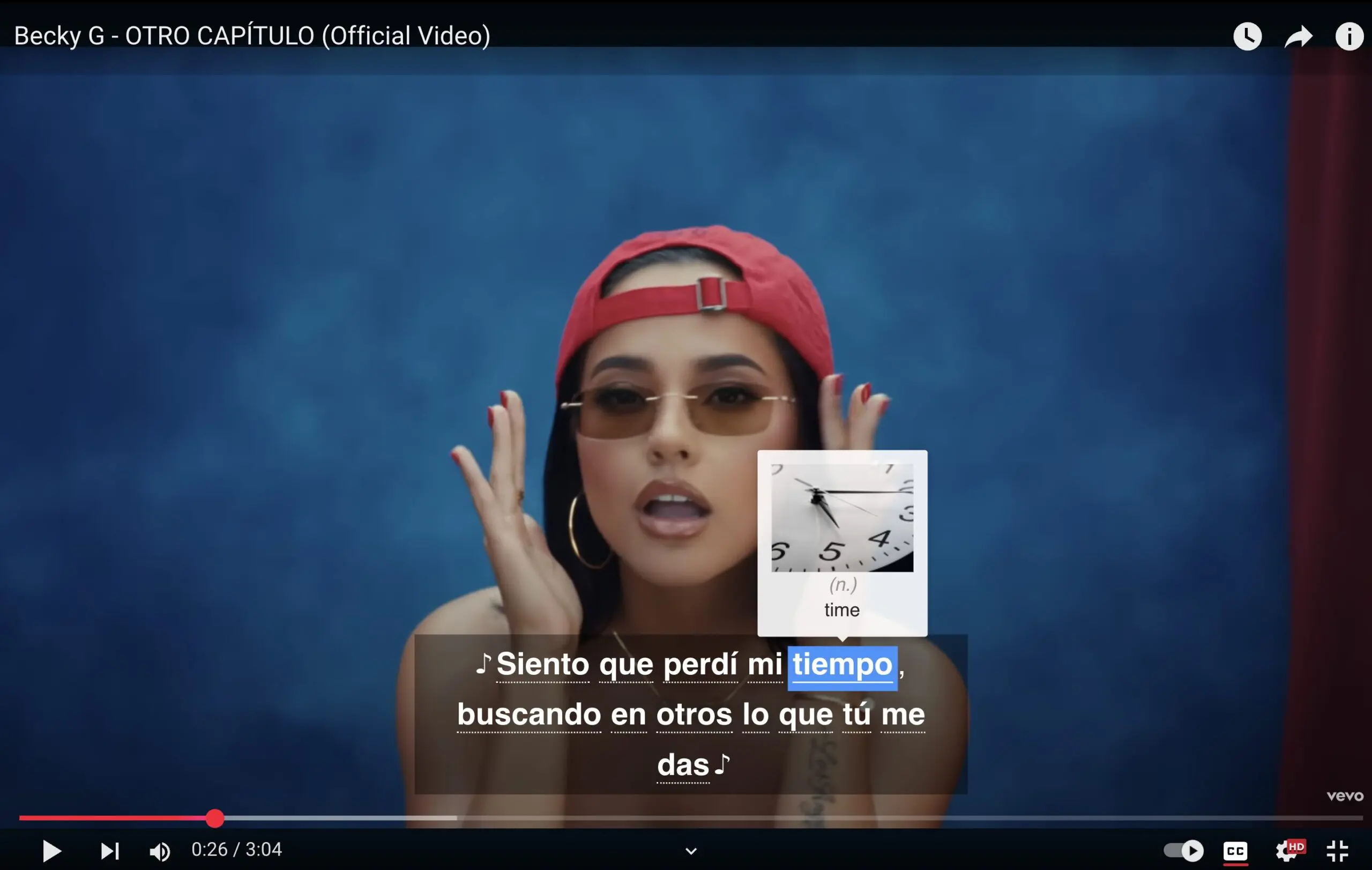Contents
- Unique Aspects of Salvadoran Spanish
- 1. Salvadorans Generally Use Voseo
- 2. With Foreigners, Salvadorans Still Use Tú
- 3. Salvadorans Use Ustedes Instead of Vosotros
- 4. Watch Out for the Disappearing “S”
- 5. Some Salvadoran Phrases Make No Sense in Translation
- 6. It Doesn’t Always Follow “Typical” Spanish Pronunciation
- 7. Word Fusion is Common
- 8. Nahuatlisms Exist Throughout the Language
- 9. Salvadoran Slang is Called Caliche
- Facts About Salvadoran Spanish
- And One More Thing…
Key Aspects of Salvadoran Spanish

Tucked between Guatemala and Honduras, El Salvador is an excellent destination for practicing your Spanish, especially if you’re the type who loves to learn slang or idioms.
We’ll show you what sets Salvadoran Spanish apart from other Spanish dialect, including quirks in El Salvador’s grammar, pronunciation and slang.
Download: This blog post is available as a convenient and portable PDF that you can take anywhere. Click here to get a copy. (Download)
Unique Aspects of Salvadoran Spanish
Now it’s time to get into the nitty-gritty details that’ll help you survive in El Salvador without too much confusion. These language pointers will make any conversation with a Salvadoran go more smoothly.
1. Salvadorans Generally Use Voseo
You can count El Salvador among the countries using voseo, such as Argentina, Uruguay, Paraguay and most central American countries. Voseo is the use of vos in place of tú. Here are the two main differences between these forms of Spanish.
Second Person Pronoun:
Whenever you’d like to say the word “you” in an informal sense, use vos rather than tú.
For example, in Salvadoran Spanish, Vos sos muy simpática means Tú eres muy simpática in textbook Spanish, or “You are very nice” in English. This is the voseo effect.
Note: It has nothing to do with the second person plural (vosotros).
Second Person Verbs:
In voseo, the present simple forms of second person verbs generally take a different conjugation than the traditionally taught tú form. Take a look at the following examples:
Tú eres → vos sos (you are)
Tú dices → vos decís (you say)
Tú pides → vos pedís (you ask for, order)
Generally, the vos form is more regular than the tú form of the second person verb conjugations, since you simply take the infinitive verb (pedir), accent the last syllable, and replace the “r” with “s” at the end of the word (pedís).
Here’s a voseo Spanish conjugation chart for more info.
2. With Foreigners, Salvadorans Still Use Tú
So, remember how I said not to use tú? Naturally, there’s an exception.
Plenty of Salvadorans still use tú with foreigners, who are more likely to use it when speaking Spanish.
3. Salvadorans Use Ustedes Instead of Vosotros
Vosotros is the Spanish equivalent of “y’all,” or “you” if you’re addressing more than one person. However, it’s not commonly used in Salvadoran Spanish (or Latin American Spanish at all). Salvadorans use the formal, third person plural pronoun ustedes in place of vosotros.
For example:
Ustedes van a montar en bicicletas a la playa. (You all are going to ride bicycles to the beach.)
4. Watch Out for the Disappearing “S”
“S” is a mighty consonant that makes words plural in Spanish. However, Salvadoran speakers are likely to make it disappear at the ends of words in speech.
In its place you might hear something like an “h” sound, or a “j” sound, which is a guttural “h” sound in Spanish. Sometimes the “s” may be ghosted and disappear completely. This is known as aspiration, which is a common feature of Salvadoran Spanish.
For instance, in the following sentence, the “s” in parentheses would be replaced with a breathy sound.
Salvadoran pronunciation: Llevábamo(s) la(s) pupusa(s) al parque. (We used to carry the pupusas to the park.)
5. Some Salvadoran Phrases Make No Sense in Translation
The beauty of a local dialect means that you can’t learn it from a dictionary. Trying to understand things word-for-word will cause you endless frustration. Here are a few phrases that are sure to baffle Spanish learners new to Salvadoran Spanish:
Así es la onda.
Direct translation: The wave is like this.
Salvadoran Spanish meaning: This is the situation.
Está bien yuca.
Direct translation: It’s good, yucca plant.
Salvadoran Spanish meaning: It’s a really difficult situation.
Hay pericos en la milpa.
Direct translation: There are parakeets in the cornfield.
Salvadoran Spanish meaning: Watch what you say because others might be eavesdropping.
Machete estate en tu vaina.
Direct translation: Machete, stay in your sheath.
Salvadoran Spanish meaning: Mind your own business, so you don’t get into trouble.
These unique, idiomatic expressions are part of what makes Spanish learning so exciting. But they can also make the process pretty difficult. The best way to learn them is through immersion, which might seem impossible if you’re not currently living in a Spanish-speaking region.
But thanks to the internet, immersion is actually pretty easy these days—you just have to put in a bit more effort. Where you’d usually read books, listen to music or watch videos in English, try swapping them out for Salvadoran Spanish content instead.
YouTube would probably be the easiest place to find lots of Salvadoran Spanish videos. The FluentU language program is also another option.
FluentU takes authentic videos—like music videos, movie trailers, news and inspiring talks—and turns them into personalized language learning lessons.
You can try FluentU for free for 2 weeks. Check out the website or download the iOS app or Android app.
P.S. Click here to take advantage of our current sale! (Expires at the end of this month.)

6. It Doesn’t Always Follow “Typical” Spanish Pronunciation
Consonant pronunciation varies enough in Salvadoran Spanish that it’s good to have a primer to help you understand the language.
- “z” and “c” are often pronounced as “s”
- “ll” is pronounced as “y” (rather than “jh” or “sh”)
- “b” and “v” sound the same and the pronunciation is a mixture of the two sounds
- “m” is pronounced as “n” or “ñ”
In the sentence below, the words of the sentence have been changed according to the principles above.
Un hombre llamado Zorro fue caminando en la calle bajo del sol. (A man named Zorro went walking in the street in the sun.)
Salvadoran pronunciation: Un ho(n)bre (y)amado (S)orro fue ca(n)inando en la ca(y)e (bv)ajo del sol.
7. Word Fusion is Common
If you find yourself listening to a sentence in Salvadoran Spanish and thinking wait, come again? You’re probably not alone. That’s because Salvadorans have a tendency to eliminate gaps between words in speech so that two words become one.
For instance, pues sí (well yes/then yes) becomes puesí. However, this one may be something quite common in most Spanish dialects. If you’re struggling to grasp the pronunciation, it’s best to practice improving your own pronunciation. This will help your ear get used to the new intonations of the language.
8. Nahuatlisms Exist Throughout the Language
Roughly 1.5 million people speak different varieties of Nahuatl, mostly in Mexico. However, many Nahuatl words have entered the Salvadoran Spanish lexicon. Here are some examples:
Food
- Ayote (squash)
- Cacahuate (peanut)
- Elote (corn)
Places
- Ahuachapán, which means “splashing river”
- Tenango, which means “place of water and sand”
- Izalco, which means “place of black sand”
- Coatepeque, which means “hill of the serpent”
- Panchimalco, which means “place of flags and shields”
Animals and Insects
- Chapulín (grasshopper)
- Mish (cat)
- Tacuacín (opossum)
- Tecolote (owl)
- Zopilote (vulture)
Everyday Objects
- Caite (sandal)
- Guacal (large bowl)
- Papalote (kite)
9. Salvadoran Slang is Called Caliche
Though many Spanish speakers consider caliche a form of slang, it more broadly refers to the Salvadoran dialect. Salvadorans love their slang words, considering them an essential part of their culture. You can hear anyone speaking caliche, from a doctor to a waitress in a pupusería, where El Salvador’s delicious pupusas are sold.
Some common examples of Salvadoran slang are below. You can pick up more caliche with this El Salvador slang guide.
- Bicho (kid, brat)
- Bayunco/Choyado (rowdy, immature, crazy)
- Cabal (exactly, true)
- Cipote (a youth, or immature adult)
- Chivo (cool, awesome)
- Chulo (cute)
- Dundo (stupid)
- Galán (cool, excellent)
- Pisto (money)
- Puchica (wow, oh my god!)
Facts About Salvadoran Spanish
Let’s take a wide-angle view of the cultural and historical backdrop of Salvadoran Spanish.
- A Mestizo majority: Roughly 86 percent of the population in El Salvador is mestizo. “Mestizo” means mixed indigenous and European ancestry. The indigenous cultural roots of Salvadorans belong to the Pipil, an indigenous group once dominant in the region. Traces of Pipil culture still linger throughout modern Salvadoran Spanish.
- Why many languages in El Salvador are “dying languages:” You may be wondering what happened to the original languages of the indigenous peoples of El Salvador. One of the most impacting events from El Salvador’s history was the 1932 Massacre. This genocidal event took place when the indigenous population revolted against the government for gradually eliminating their system of commonly held lands.
Some 30,000 members of the native population died at the hands of the military. Following the massacre, the indigenous people of El Salvador would hide their cultural identity markers, such as their traditional clothing and their language. As a result, indigenous languages have declined in El Salvador.
- El Salvador is known for the following indigenous languages: Nahuatl, the language of the Aztecs, Pipil (endangered), Lenca (endangered), Q’eq’chi (the Mayan language more commonly spoken in Guatemala and Belize) and Cacaopera (extinct).
By now, you’ve learned a lot about caliche, the Spanish dialect of the locals. But don’t let this stop you from learning more! The language and culture of El Salvador are filled with surprises that friendly Salvadorans are more than willing to share.
Download: This blog post is available as a convenient and portable PDF that you can take anywhere. Click here to get a copy. (Download)
And One More Thing…
If you want to learn Spanish with authentic materials but need a little extra support, then you need to know about FluentU.
FluentU lets you consume the same content as native Spanish speakers, but with tools to make it easier to pick up the language while you watch. You’ll learn Spanish as it’s actually spoken by real people, unlike programs that use scripted content.
You can bring our learning tools directly to YouTube or Netflix with the FluentU Chrome Extension, or check out our curated video library full of clips that cover a wide range of topics, as you can see here:
FluentU brings native videos within reach with interactive subtitles. You can tap on any word to instantly see its meaning, an image, and its audio pronunciation. Click on the word for additional examples and to add it to your flaschards.
To reinforce what you've learned, you'll complete engaging exercises and see more examples of the key words from the video. FluentU keeps track of the vocab you’re learning, and gives you extra practice with difficult words.
Start using the FluentU website on your computer or tablet or, better yet, download the FluentU app from the iTunes or Google Play store. Click here to take advantage of our current sale! (Expires at the end of this month.)











